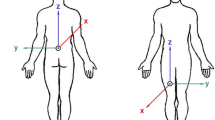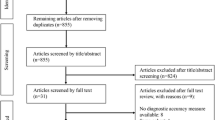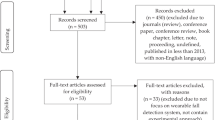Abstract
Objective measurement of real-world fall events by using body-worn sensor devices can improve the understanding of falls in older people and enable new technology to prevent, predict, and automatically recognize falls. However, these events are rare and hence challenging to capture. The FARSEEING (FAll Repository for the design of Smart and sElf-adapaive Environments prolonging INdependent livinG) consortium and associated partners strongly argue that a sufficient dataset of real-world falls can only be acquired through a collaboration of many research groups. Therefore, the major aim of the FARSEEING project is to build a meta-database of real-world falls. To establish this meta-database, standardization of data is necessary to make it possible to combine different sources for analysis and to guarantee data quality. A consensus process was started in January 2012 to propose a standard fall data format, involving 40 experts from different countries and different disciplines working in the field of fall recording and fall prevention. During a web-based Delphi process, possible variables to describe participants, falls, and fall signals were collected and rated by the experts. The summarized results were presented and finally discussed during a workshop at the 20th Conference of the International Society of Posture and Gait Research 2012, in Trondheim, Norway. The consensus includes recommendations for a fall definition, fall reporting (including fall reporting frequency, and fall reporting variables), a minimum clinical dataset, a sensor configuration, and variables to describe the signal characteristics.
Zusammenfassung
Die objektive Messung von realen Sturzereignissen mithilfe von am Körper getragenen Sensoren kann helfen, das Verständnis von Stürzen älterer Menschen zu verbessern. Durch die sensorbasierte Messung wird die Entwicklung neuer Technologien ermöglicht, die hilft, Stürze zu verhindern, vorherzusagen und automatisch zu erkennen. Allerdings sind Sturzereignisse vergleichsweise selten und daher schwer zu messen. Das FARSEEING („FAll Repository for the design of Smart and sElf-adapaive Environments prolonging INdependent livinG „)-Konsortium und assoziierte Partner vertreten die Auffassung, dass ein ausreichend großer Datensatz von realen Stürzen nur durch die Zusammenarbeit vieler Forschergruppen erreicht werden kann. Daher ist ein Hauptziel des FARSEEING-Projektes der Aufbau einer Metadatenbank für reale Stürze. Hierfür ist eine Standardisierung der Daten notwendig, um verschiedene Quellen zur Analyse zusammenfügen zu können und eine entsprechende Datenqualität zu gewährleisten. Im Januar 2012 wurde ein Konsensus-Prozess begonnen, mit dem Ziel ein Standarddatenformat für Stürze zu erarbeiten. Beteiligt waren 40 Experten auf den Gebieten Sturzerfassung und Sturzprävention aus unterschiedlichen Ländern. Während eines webbasierten Delphi-Prozesses wurden mögliche Variablen zur Beschreibung der Teilnehmer, der Stürze und der Sturzsignale gesammelt und von den Experten nach Wichtigkeit bewertet. Die zusammengefassten Ergebnisse wurden auf einem Workshop während der 20. Konferenz der International Society of Posture and Gait Research 2012, in Trondheim, Norwegen präsentiert und abschließend diskutiert. Der Konsensus beinhaltet Empfehlungen für eine Sturzdefinition, Sturzberichte (einschließlich Sturzberichtshäufigkeit und Sturzberichtsvariablen), einen minimalen klinischen Datensatz, eine Sensorkonfiguration und Variablen zur Beschreibung der Signalcharakteristika.



Similar content being viewed by others
References
Hale WA, Delaney MJ, Cable T (1993) Accuracy of patient recall and chart documentation of falls. J Am Board Fam Pract 6:239–242
Zieschang T, Schwenk M, Becker C et al (2011) Feasibility and accuracy of fall reports in persons with dementia: a prospective observational study. Int Psychogeriatr 1–12
Zecevic AA, Salmoni AW, Lewko JH et al (2009) Utilization of the seniors falls investigation methodology to identify system-wide causes of falls in community-dwelling seniors. Gerontologist 49:685–696
Robinovitch SN, Feldman F, Yang Y et al (2012) Video capture of the circumstances of falls in elderly people residing in long-term care: an observational study. Lancet 381(9860):47–54
Becker C, Chiari L (2012) What videos can tell us about falling. Lancet 381(9860):8–9
Rapp K, Becker C, Cameron ID et al (2012) Epidemiology of falls in residential aged care: analysis of more than 70,000 falls from residents of bavarian nursing homes. J Am Med Dir Assoc 13:187.e1–e6
De Bruin ED, Hartmann A, Uebelhart D et al (2008) Wearable systems for monitoring mobility-related activities in older people: a systematic review. Clin Rehabil 22:878–895
Rubenstein LZ (2006) Falls in older people: epidemiology, risk factors and strategies for prevention. Age Ageing 35(Suppl 2):ii37–ii41
Schwickert L, Becker C, Lindemann U et al (2013) Fall detection with body-worn sensors: a systematic review. Z Gerontol Geriatr (this issue)
Klenk J, Becker C, Lieken F et al (2011) Comparison of acceleration signals of simulated and real-world backward falls. Med Eng Phys 33:368–373
Kangas M, Vikman I, Nyberg L et al (2012) Comparison of real-life accidental falls in older people with experimental falls in middle-aged test subjects. Gait Posture 35:500–505
Bagalà F, Becker C, Cappello A et al (2012) Evaluation of accelerometer-based fall detection algorithms on real-world falls. Plos One 7:e37062
Becker C, Klenk J (2013) Design and building of a shared database of real-world falls in older persons. IAGG World Congress of Gerontology and Geriatrics. Seoul, Korea
Lamb SE, Jørstad-Stein EC, Hauer K Becker C (2005) Development of a common outcome data set for fall injury prevention trials: the Prevention of Falls Network Europe consensus. J Am Geriatr Soc 53:1618–1622
Bourke AK, Torrent M, Parra X et al (2011) Fall algorithm development using kinematic parameters measured from simulated falls performed in a quasi-realistic environment using accelerometry. Conf Proc IEEE Eng Med Biol Soc 2011:4449–4452
Acknowledgments
The following experts are also part of the FARSEEING consensus group and contributed to the discussion: Christophe Büla, Centre Hospitalier Universitaire Vaudois Lausanne, Switzerland; Michele Carenini, NoemaLife spa, Italy; Matthias Gietzelt, University of Braunschweig and Hannover Medical School, Germany; Jeffrey M. Hausdorff, Beth Israel Deaconess Medical Center and Harvard Medical School, USA and Israel; Helen Hawley, University of Manchester, United Kingdom; Anisoara Ionescu, EPFL Lausanne, Switzerland; Maarit Kangas, University of Oulu, Finland; Fabio La Porta, Azienda USL di Modena, Italy; Stephen Lord, Neuroscience Research Australia, Australia; Walter Mätzler, University of Tübingen, Germany; Michael Marschollek, University of Braunschweig and Hannover Medical School, Germany; Norbert Noury, University of Lyon, France; Rachel Potter, University of Warwick, United Kingdom; Kilian Rapp, Robert-Bosch Hospital Stuttgart and University of Ulm, Germany; Stephane Rochat, Centre Hospitalier Universitaire Vaudois Lausanne, Switzerland; Johannes Salb, University of Erlangen, Germany; Michael Setton, SENSARIS, France; Olav Sletvold, Norwegian University of Science and Technology, Norway; Stuart Smith, Neuroscience Research Australia, Australia; Matthis Synofzik, University of Tübingen, Germany; Enrico Valtolina, Bticino spa, Italy.
Compliance with ethical guidelines
Conflict of interest. J. Klenk, L. Chiari, J.L. Helbosad, W. Zijlstra, K. Aminian, C. Todd, S. Bandinelli, N. Kerse, L. Schwickert, S. Mellone, F. Bagalá, K. Delbaere, K. Hauer, S.J. Redmond, S. Robinovitch, O. Aziz, M. Schwenk, A. Zecevic, T. Zieschang, and C. Becker state that there are no conflicts of interest. The companies participating in the FARSEEING project had no influence on the writing of the manuscript and the presented results.
The accompanying manuscript does not include studies on humans or animals.
Funding
The FARSEEING project is being funded by the European Commission (Grant agreement no.: 288940).
Author information
Authors and Affiliations
Consortia
Rights and permissions
About this article
Cite this article
Klenk, J., Chiari, L., Helbostad, J. et al. Development of a standard fall data format for signals from body-worn sensors. Z Gerontol Geriat 46, 720–726 (2013). https://doi.org/10.1007/s00391-013-0554-0
Published:
Issue Date:
DOI: https://doi.org/10.1007/s00391-013-0554-0




